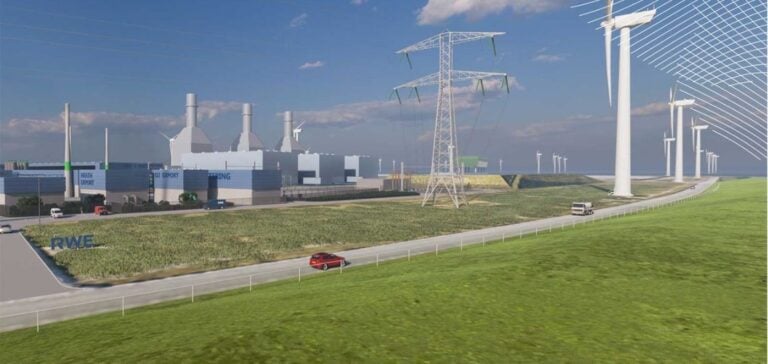RWE, the Netherlands’ largest electricity producer, recently announced the acquisition of the necessary construction and environmental permits to develop a 100-megawatt (MW) electrolyser near the Magnum power plant in Eemshaven, in the north of the country. This project is part of the company’s efforts to promote green hydrogen production and contribute to the country’s energy system integration. The electrolyser is designed to transform renewable electricity generated by the OranjeWind wind farm, a 795 MW offshore project in the North Sea developed in partnership with TotalEnergies.
RWE anticipates that this electrolyser will play a key role in supporting local industries in their decarbonization efforts by providing a sustainable energy alternative. The project is also part of a broader plan to turn the Eemshaven region into a renewable energy hub, where green hydrogen will contribute significantly to reducing carbon emissions in the industrial sector.
An integrated project with the OranjeWind wind farm
The integration of the electrolyser project with the OranjeWind wind farm represents an example of innovation in the use of renewable energy sources in the Netherlands. Due to the intermittent nature of wind energy, it is essential to develop solutions that enable the flexible and efficient use of this energy. Once operational, the 100 MW electrolyser will convert excess electricity generated by wind energy into hydrogen, a stable and storable energy solution.
In parallel, TotalEnergies has announced that it will allocate part of OranjeWind’s electricity production to electrolyzers with a total capacity of 350 MW for green hydrogen production to supply its refineries in Northern Europe. This collaboration between RWE and TotalEnergies underscores both companies’ commitment to advancing green hydrogen as a viable alternative to fossil fuels in the industrial sector.
Infrastructure development and implementation conditions
The realization of this 100 MW electrolyser project depends on several conditions, including the availability of the necessary infrastructure for hydrogen transport. Dutch authorities are currently working on establishing a national hydrogen network, called the “backbone,” to ensure the efficient transport of green hydrogen to client companies.
In addition to the OranjeWind project, RWE is also conducting initiatives for a 50 MW electrolyser at the nearby Eems power plant. This expansion in the Eemshaven region demonstrates the company’s commitment to contributing to Europe’s energy transition. However, these projects are still subject to final investment decisions, which will depend, among other factors, on the establishment of hydrogen transport infrastructure.
A strategy aligned with European climate goals
The development of green hydrogen aligns with the strategies of RWE and TotalEnergies to meet the European Union’s requirements for reducing greenhouse gas emissions. By integrating solutions like the Eemshaven electrolyser within wind projects, these companies actively participate in the collective effort to achieve carbon neutrality targets.
Green hydrogen is seen as a crucial lever for high-energy-intensive industries for which direct electricity is not a viable solution. This project thus represents a major advance for the Eemshaven region, contributing not only to the local economy but also to the climate ambitions of the Netherlands and Europe.






















